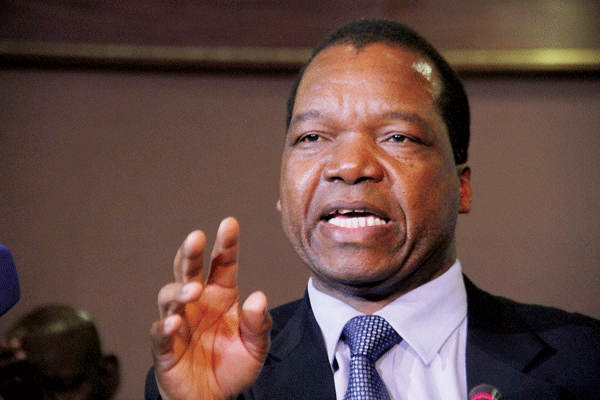
Deposit growth
ALTHOUGH they remained tilted towards short term — with demand deposits accounting for 58% of total deposits — bank deposits grew strongly by 19,2% year-on-year to $5,681 million in December 2016.
OMEN MUZA
“Contrary to some people’s beliefs, the exact situation regarding money supply is that deposits have been increasing overtly the nine years that the multi-currency exchange system has been in place. The growth is attributable to growth in exports, contracting foreign loans, Diaspora remittances and reduction in imports, especially grain due to the success of Command Agriculture,” RBZ governor John Mangudya said.
Measure of confidence
“Deposits are a measure of confidence in the banking space, more so in periods of depression and macro-economic challenges,” one Musinde Matondo opined recently. BancABC chairman, Alvord Mabena, agrees and in his statement accompanying the audited financial results for the year ended December 31 2016, noted that under normal circumstances, low confidence in the banking sector and weak economic activities would dictate depressed deposit growth in the banking system. While the RBZ governor mentions the key reasons to which deposit growth is attributed, he neglects to mention the ones to do with foreign currency constraints, cash shortages and other factors. It is these that we focus on in this instalment.
Nostro payment gridlocks
Although it is not something to celebrate, customers’ inability to secure foreign currency for import payments has had a positive impact on deposits. Stanbic Bank’s customer deposit base, for instance, “grew by 48% from $474 million in 2015 to $701 million driven by the increase in customer deposits given the obtaining foreign currency shortages which saw customers moving their funds from one bank to another in search of nostro allocations,” according to CEO, Joshua Tapambgwa. Ecobank’s deposits also grew by over 99% over the same period.
- Chamisa under fire over US$120K donation
- Mavhunga puts DeMbare into Chibuku quarterfinals
- Pension funds bet on Cabora Bassa oilfields
- Councils defy govt fire tender directive
Keep Reading
Cautious lending activities
The rapid growth in customer deposits could not be matched by asset creation given the increasingly tough operating environment which was characterised by increased default risk. This in turn resulted in the 2016 loan to deposit ratio deteriorating for a number of banks.
Withdrawal limits
In an effort to fight externalisation of foreign currency, the Reserve Bank of Zimbabwe introduced withdrawal limits in 2016. However, even after the limits were put in place, availability of cash remained constrained largely due to structural issues such as the current account deficit and nostro funding challenges that constrained the importation of cash. This meant that even when customers were inclined to withdraw the money in their accounts, they could not do so due to these withdrawal limits which ensured that the money stayed in banks longer than before with a positive impact on deposits.
Cash shortages
Naturally, the struggles of the banking public to access their cash from banks has occasioned a serious erosion of confidence. The fact that depositors cannot withdraw their money when they want to has had the positive impact of ensuring deposit growth. This is despite the fact that at a time like this, depositors are not inclined to deposit whatever cash they may come across because of the difficulty of getting it back when they want it.
Omen N. Muza is the Founder and Editor of the MFSB. You can view his LinkedIn profile at zw.linkedin.com/pub/omen-n-muza/30/641/3b8 or initiate contact on [email protected].











